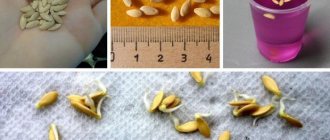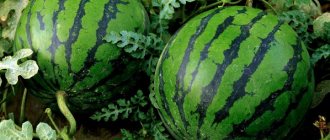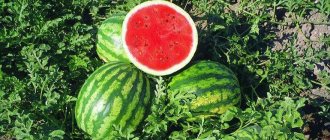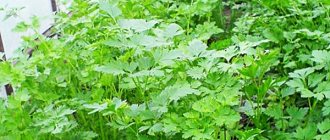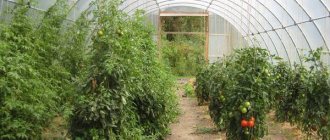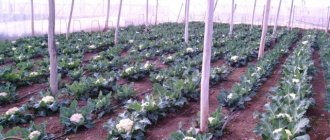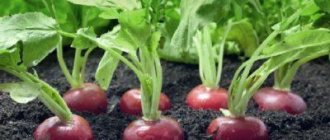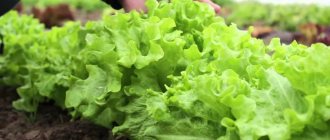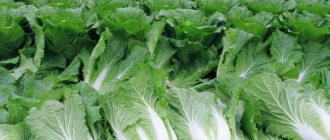Who is not familiar with the unique taste of melon, which delights us at the end of summer? You can eat melon just like that, make jam, jams, dry it, or dry it. This dietary product is useful for everyone, it has a very beneficial effect on health, is easily digestible, and helps with anemia and exhaustion. Melon is necessary for children and old people, as it contains many useful substances, microelements, and vitamins.
Melon has a beneficial effect on human health.
If you have a summer house or a small plot of land with a vegetable garden, then it is quite possible to grow a melon yourself. Both open ground and a greenhouse are suitable for this. To grow melon, you do not need special agricultural technology; it is enough to properly prepare the soil (and the greenhouse, if the cultivation will be carried out in it), and fertilizers. You will also need patience, because almost all plants require careful care. When growing in open ground, it is necessary to take into account that melon loves warmth, bright light and scanty watering (water is needed only when the top layer of soil is dry). There are also special requirements for the soil, which must be neutral or slightly alkaline and breathable. Mineral fertilizers (very weak solutions) are used for fertilizing; it is necessary to systematically loosen the soil. Melon does not like conditions such as:
Melons are best grown in greenhouses.
- slightly acidic and acidic soils, which are characterized by high density, as this prevents the roots of the plant from eating and breathing normally, and moisture from evaporating;
- stagnant, very humid air, cold drafts;
- watering with cold water, and generally cool weather;
- use of manure as fertilizer, concentrated and excessive doses of mineral and organic fertilizers.
Growing in a greenhouse is more simple, but all the above conditions apply here too. Warm, dry air, lots of light and proper watering. Here's everything you need to get your own sweet, delicious melon!
How to properly care for your Torpedo?
Melon is a powerful and viable crop, capable of producing huge fruits that are unusually large and tasty. But for this she needs certain conditions. How sweet and large the melons will grow depends on the efforts of the gardener.
Neglect of care can end disastrously for the crop - if the plants do not dry out or wither from thirst and lack of food, then diseases and pests will destroy it. Let's find out how to care for the Torpedo.
Regularity of watering
The amount of watering depends on the climate, current weather conditions, the growing method and the growing season. Features of watering melon:
- If the melon is sown in open ground. Plantings are watered starting from the moment of sowing so that seedlings appear faster. The plantation is watered about 5 times every week - if there is no rain. Watering rate – 45 liters per 1 sq. m. The second important stage for watering is from the emergence of seedlings to the formation of ovaries. During this period, the roots of the plant have not yet penetrated deep enough into the soil, so it needs artificial irrigation.
- If the melon is planted with seedlings. Water the plantings as the soil dries out. Overmoistening is not acceptable.
- A month before harvesting, watering is stopped - otherwise the fruits will be unsweetened and watery, but most importantly, they will crack.
Thinning and loosening
When sowing seeds in open ground, the seedlings are thinned out twice:
- when the first leaf blooms;
- after blooming 3-4 leaves.
There should be 1-2 of the strongest plants left in the hole. When thinning, the soil is loosened, trying not to affect the area near the seedlings - so as not to damage the roots. During the growing season, melon plantings are loosened approximately 3-4 times. Loosening depth – 8-10 cm.
When and what to feed?
Melon plantings are fertilized 2-3 times during the growing season. Fertilizing is especially important when growing melons in open ground. The first is carried out when the first leaf appears. Then the plants are fed
Scheme and composition of fertilizing when growing melon in seedlings:
| When to deposit? | What to fertilize with? |
| Planting seedlings in the ground in mid-May, when the plant has its first 4 leaves | humus or vermicompost |
| 10 days after landing | application of nitrogen fertilizers - 20 g of ammonium nitrate per bucket of water |
| In another week | humus, ash or chicken manure solution |
| A week later | repeat of previous feeding |
In the fall, during plowing, phosphorus and potassium fertilizers are applied, and in the spring, nitrogen fertilizers are applied. Do not apply too much nitrogen fertilizer, otherwise the crop will overgrow.
Melon loves potassium most of all. If there is enough of it, the plant blooms well, does not get sick, and the ovaries and fruits are actively forming. Melons come out sweet and ripen quickly. All one-component fertilizers are diluted in water.
If fertilizer is applied at the root, take a bucket of water:
- superphosphate – 50 g;
- ammonium nitrate – 15 g;
- potassium chloride – 30 g.
Pinching and removing ovaries
In the middle zone, the formation of melon bushes is a particularly important event, on which the yield depends. In order for the fruits to be large and have time to ripen, it is necessary to limit their number on the bush
Features of the formation of Torpedo bushes:
- There should only be 2-3 shoots left on one plant.
- The main stem is pinched when 3-4 fruits have formed.
- The tops of the left side shoots are also pinched.
- When the diameter of the fruit reaches 5-6 cm, remove all excess ovaries.
- On one plant, depending on its strength, 3-6 of the largest fruits are left. Climatic conditions are also taken into account - the shorter and cooler the summer, the fewer fruits the bush can “feed”.
Diseases and pests
The Kolkhoznitsa melon grows quickly, without damage, if it is not attacked by fungal infections. Among the common diseases of melons and melons are:
- powdery mildew;
- fusarium;
- root rot;
- copperhead
The appearance of spots on the leaves, their yellowing, stunting of melon growth, and the appearance of ugly fruits are the result of the pathological action of fungi. Plants are treated three times with fungicidal preparations, and diseased plants are destroyed.
The most common pest is the spider mite. Melon fly larvae overwinter in the ground, and in the spring they develop into insects. Females lay eggs in the pulp of the fruit, which causes the melon to rot. Caterpillars of the gnawing cutworm also cause damage to Kolkhoznitsa melon plantings. They destroy the leaves and stems of the plant. They fight parasites using insecticidal drugs. Treating crops with a solution of laundry soap and tobacco dust helps.
Only compliance with the rules of agricultural technology for melons will lead to the fact that diseases and pests will bypass it.
Melon care in a greenhouse
Careful care of a melon in a greenhouse requires attention and takes a lot of effort. But without this, the harvest may not ripen.
Correct temperature
After transplanting young seedlings, the temperature in the greenhouse is maintained at 25-30 ºС. If the weather permits, ventilate the room daily. When the plant takes root, reduce the temperature by 5 degrees. The night air temperature in the greenhouse should not be lower than 15 ºС.
Humidity and watering
Watering the melon must be done by drip or with a watering can, so as not to wet the green above-ground part. The water should be warm. In extreme cases, the plant can tolerate drought, but does not tolerate waterlogged soil. Air humidity - no more than 60%.
Lighting
Melon needs sunlight up to 14 hours a day. If there is insufficient lighting, the plant withers and lags behind in growth. Therefore, be prepared to use lighting fixtures. There are special phytolamps on sale that emit ultraviolet light, which is necessary for the crop for biological processes. You can use LED and fluorescent lamps instead.
Top dressing
A lack or excess of minerals in the soil is very dangerous for melons - the fruits quickly rot. Complex fertilizers (nitroammofoska, ammophoska, etc.) are applied once every 10-14 days at the root until flowering at the rate of 10 g per 10 liters of water. Consumption - 5-7 liters at the root.
When flowering and ovary formation, melons are fed with superphosphate. You need to dilute 40 g of bait in 10 liters of water. The consumption rate is 2.5 g of superphosphate per square meter. m.
When the fruits ripen, fertilizing with ash is used. It is scattered over the surface, or an ash infusion is prepared.
Greenhouse pollination
When the greenhouse is opened to full daylight, pollination will be carried out by bees. Otherwise, this procedure will have to be carried out by the gardener. When the flowers are fully open, pick the male flower (it is larger, with a swelling at the base) and pass it over the female flower cups so that the pollen spills onto them.
For every 1 male flower there are 4 female flowers. Repeat the procedure as necessary. To avoid picking the male flower, you can use a cotton swab.
Thinning
When the melon fruits grow to the size of a chicken egg, thin them out. To do this, leave 5-7 fruits on the vine, pick off the rest, otherwise there will not be enough food for everyone and the harvest will not ripen. After thinning, water the bed thoroughly and apply complex fertilizers.
Formation of bushes: pruning, pinching, pinching
Melon forms fruits not on the main stem, but on the side ones. Therefore, the first pinching must be done at the seedling stage - the sprout is pinched above the 3rd leaf. The main stem will grow from the bud above it, and the side shoots will grow from the lower ones. The second procedure is carried out when the lashes have grown to a length of at least 2 m. Here you need to pinch both the side stems and the main one.
The number of ovaries on the lash also needs to be adjusted. When growing vertically in a greenhouse, leave 3-4 ovaries closest to the base on the stem. In the future, monitor the formation of the bush, simply removing excess stepsons.
Harvest and storage
They begin harvesting by making sure that the fruit is fully ripe: the mesh on its surface is clearly visible, the color is uniform, and the melon itself is easily torn from the vine.
Typically, early ripening varieties are stored for up to 8 weeks, late ones - up to 6 months. Pick fruits with a stalk of about 3 cm in the morning or evening. Leave the melons on the plot for four days, but turn them over every 6 hours.
After time has passed, remove the fruits to a cool, dark place that has been disinfected and whitened with lime. Place the harvest on shelves sprinkled with sawdust or in a hanging position. The storage temperature should be 3-4 ºС, and the air humidity should be 80%. Check the fruits periodically; if they begin to spoil, eat them.
Harvest
It is also worth paying great attention to harvesting the fruits. You need to collect them when you smell their specific smell. This usually happens towards the end of summer.
Ripe melons
In order to determine the level of ripeness of the fruit, you need to lightly press on the base. If it is soft and indentations from fingers remain on its surface, then the fruit is ripe and ready to eat. It is worth paying attention to the fact that melons are consumed immediately.
When storing melons in a greenhouse, you should be very careful to ensure that microorganisms do not begin their activity on its surface. To avoid this phenomenon, you need to protect the melon from dampness and cold. It is not recommended to store them for a long time.
Now that you know how to grow melons in a greenhouse, you can safely buy seedlings and get to work.
Choosing a melon variety for central Russia
In central Russia, not many varieties of melons can be grown with guaranteed success. The most traditional ones, which are always heard, are Altai and Kolkhoznitsa. However, the range is currently by no means limited to these well-known representatives
At the same time, when choosing a variety for a region that is not too warm, you need to pay attention to whether it is zoned for cultivation in such a climate. Perhaps the variety you like can be planted, but only in a greenhouse
Early and mid-late varieties of melons are suitable for growing in central Russia
In any case, in the middle zone you have to limit yourself to early varieties (in extreme cases, medium ripening), since the late ones (and they are often the most delicious) will not have time to ripen here. If you look at the State Register of Breeding Achievements of the Russian Federation, it turns out that in the middle zone it is recommended to grow only one variety - Princess Svetlana. A few more are also suitable for similar climate conditions, for example:
- Collective farmer,
- Lesya,
- Lolita,
- Tender.
Of course, gardeners do not limit themselves to official recommendations and plant various varieties and hybrids, especially since their number is growing every year.
Melons for open ground:
- Cinderella is a high-yielding variety, one of the earliest ripening, producing small, slightly oval yellow fruits (weighing from 1 to 2 kg) with a wonderful honey taste. The growing season is just over 2 months: 60–72 days pass from germination to technical maturity. The variety is resistant to diseases and vagaries of weather, intended for fresh consumption: the fruits are stored for no more than 2 weeks;
- Altai is a variety that is almost as fast as Cinderella; harvesting is possible already in mid-summer. The fruits are yellow, elongated, weighing up to 1.5 kg. The pulp is less sweet, but beautiful, pale orange in color, and aromatic. The fruits are almost not stored and are intended for quick consumption after picking;
- Assol F1 produces yellow-orange round-shaped fruits weighing about 1 kg. The pulp is very juicy, sweet, aromatic, greenish in color. The growing season ranges from 80 to 90 days. Productivity - up to 1 kg/m2. Melons are stored for about 7 days, the variety is characterized by high resistance to diseases;
- Kolkhoznitsa is a widely known medium-ripening variety, grown in most of our country since 1943, the growing season ranges from 73 to 95 days. The fruit is an ideal ball weighing about 1 kg, yellow-orange in color, smooth. The pulp is almost white, sweet, juicy. Valued for its excellent taste and high yield, as well as its ability to be transported over long distances. The disadvantage of the variety is low resistance to many diseases;
- Lesya produces larger fruits, weighing more than 2 kg, yellow-orange in color, oval in shape. The pulp is tender, oily, white to cream in color. Ripens in 60–85 days. The aroma is common, characteristic of most varieties of melon, the taste is good. The variety is resistant to most diseases and extreme droughts, high-yielding.
Photo gallery: melon varieties for open ground
Varieties for growing in greenhouses:
- Princess Svetlana. It takes about 3 months from germination to harvest. The fruits are spherical, almost white, weighing about 1.5 kg. The pulp is tender, juicy, orange in color, excellent taste, with a strong aroma. The fruits are stored for 2.5–3 weeks and tolerate transportation normally;
- Lada ripens 3 months after germination (74–96 days pass until technical maturity), the fruits weigh from 1.5 to 2 kg, are orange, round, very sweet. The pulp is light cream in color. The variety is disease-resistant, the melons do not crack, the presentation is excellent;
- Titovka is one of the fastest ripening varieties, the growing season is 55–70 days. The fruits are orange in color, slightly elongated, their size is very diverse: both miniature specimens and melons weighing up to 3.5 kg can be present in the garden at the same time. The pulp is pure white, fleshy, tasty. Disease resistance is at an average level;
- Krinichanka is another representative of very early varieties: the first melons ripen 70 days after germination. The fruits are round-oval, medium size (about 2 kg), yellow-orange. The pulp is very sweet, variable in color (from greenish to cream). The use of a greenhouse does not affect the speed of ripening: the variety can grow with a lack of natural light;
- Zlato Scythians F1 is an early ripening hybrid, the first fruits ripen in 75–80 days, they are round, small (about 1 kg), yellow in color. The pulp is sweet, aromatic, tender, very juicy. The presentation is good. The hybrid is famous for its high yield and good disease resistance.
Fertilization and watering
Feeding melons in the greenhouse is mandatory, otherwise the plants develop poorly and bear little fruit. A week after planting the seedlings, the plants are fed with a light solution of ammonium nitrate, and three weeks later, complex mineral fertilizer is applied again. When grown in soil poor in microelements, melon should be fed in a greenhouse with ammonium nitrate every week. After the first ovaries appear, you can use a universal fertilizer for tomatoes, which is applied to the soil every two weeks.
Excess moisture can be detrimental to melons, so such plants should be watered very carefully. Under no circumstances should water get on the stems and leaves. Usually, to simplify watering, gardeners make small grooves in the ground, into which they lower a hose and fill them with water. This allows you to evenly moisten the soil without allowing excess moisture. For irrigation, warm and settled water must be used. During the period of mass flowering, in order to attract pollinating insects, plants can be sprayed with sweet syrup from a spray bottle.
History and characteristics of melon
This variety belongs to the melons and gourds of the Cucurbitaceae family. From a botanical point of view, it is a false berry, but since it belongs to the same genus as the cucumber, it should correctly be called a vegetable. Let's describe in more detail what it looks like. So, the Kolkhoznitsa bushes are not too spreading, the stems of the plant are thin and a little rough to the touch. The leaves resemble a heart shape, medium-sized, with slightly indented edges.
Selection
This variety appeared at the Novocherkassk breeding station in the Rostov region in 1939. In 1943, the variety was included in the State Register of Breeding Achievements of the USSR and has since enjoyed constant popularity among gardeners. This variety is perfectly grown in greenhouse conditions in countries such as Italy, the Netherlands, France, and Japan.
Description of the variety
Kolkhoznitsa is a mid-season variety, with a growing season of 90–95 days. The fruit has a spherical shape with a diameter of 20 cm, weighing up to 1.5 kg. Color: yellowish-orange or bright orange. The pulp tastes sweet, crispy, and has a yellowish tint.
The surface is smooth, in places covered with mesh. The skin is hard, of medium thickness. Melon contains a huge range of vitamins (A, C, E, group B, PP). It contains minerals such as potassium, iron, calcium, magnesium, as well as mono- and disaccharides.
Advantages and disadvantages
- The advantages of the Kolkhoznitsa variety are:
- Resistant to low ambient temperatures.
- Excellent taste.
- Handles transportation well and does not crack.
- Short growing season.
Did you know? Austrian resident Christoph Schieder managed to grow the largest melon in the world. Her weight was 447.5 kg.
- The disadvantages of the variety include:
- Low resistance to diseases (powdery mildew) and insect pests (spider mites and melon aphids).
- Not too long shelf life.
- When grown in greenhouse conditions, artificial pollination is necessary.
Calorie content, benefits and harm
You should become more familiar with the health benefits and harms of consuming melon. It is mistakenly considered a high-calorie product. Answering the question of how many calories are in melon, we can say that 100 grams of this product contains only 31 to 35 kcal.
Melon has long been used as a medicinal remedy. It perfectly quenches thirst, while washing the kidneys and urinary tract. It contains fiber, which helps you lose weight because it affects the digestive processes.
It must be remembered that the degree of ripening affects the calorie content of the product. Kolkhoznitsa differs from other varieties not only in its taste, but also in its composition of nutrients. It brings particular benefits during pregnancy, namely: it provides the mother’s body with folic acid (vitamin B9) and prevents colds.
However, it is not recommended to use melon in the following cases:
- Taste with milk, honey, and alcohol.
- In the presence of stone disease of the gallbladder and kidneys.
- Patients with diabetes mellitus.
Read what you can use melon with.
How to harvest a good harvest?
The first rule is compliance with agricultural technology and planting patterns. When growing melons, 6 stages can be included here:
- tillage and soil preparation;
- adding substances to nourish the plant or improve soil characteristics;
- seed preparation;
- sowing (for planting or seedlings);
- plant care;
- harvest.
It is the first five points that influence the last stage. If something is missed, the plant may die altogether. The second rule for a good and tasty harvest does not depend on the person - it is sunlight and heat, which directly affect the taste of the melon.
Landing rules
Proper preparation of seed material is carried out as follows:
- melon seeds must be soaked in a special stimulating solution for at least twelve hours;
- Watermelon seeds should be soaked in warm salted water for 24 hours.
When cultivating plants, it should be taken into account that watermelon is more demanding of thermal conditions than other melons and melons. Watermelon seeds begin to grow at a temperature of at least sixteen degrees. The optimal temperature for watermelon and melon is twenty-five degrees. Seeds planted on seedlings are well moistened and covered with glass or film, which is removed after sprouts appear.
As soon as the ovary begins to enlarge, you should pinch off the lashes and leave no more than eight leaves after the developing fruit
In May, you should begin preparing greenhouse soil. It is necessary to dig square holes in the greenhouse into which layers of humus and soil are poured. After the soil has thoroughly warmed up, holes should be made in the poured layers into which the seedling material is transferred. Watermelon and melon seedlings should be transplanted as carefully as possible and with a clod of earth. The maximum depth of seedlings should not be more than five centimeters.
Recommendations from gardeners
Experienced gardeners, in order to get an earlier harvest, advise planting melon in greenhouses from the beginning of April. Or under the covering material directly into the holes. The latter method will help avoid transplanting seedlings, which is an important advantage, since they do not tolerate it well.
To avoid buying cassettes and peat cups for seedlings, gardeners recommend making them yourself. To do this, fold 1 A4 sheet in half along the long side and cut it. The resulting two long strips are rolled into cups. They are placed in a container and covered with earth. This is very convenient in the future when transplanting.
To make the seedlings easier to survive planting in the ground, they are planted immediately in peat cups. This option will allow you to preserve the root system, not damage it and reduce the harvest time.
Features of cultivation
Are you choosing where to plant Kolkhoznitsa seeds? Opt for sunny areas, reliably protected from the wind, with well-fertilized and fertile soil. It is best to prepare the soil for planting in advance, in the fall. To do this, you need to dig up the selected area and feed it with organic matter. If the soil contains clay in large quantities, sand must be added to it. This will make the soil looser.
Preparing the site in the spring involves digging it up and fertilizing it with fertilizers containing phosphorus and potassium. After such preliminary work, you can plant the melon. When choosing seeds for seedlings, you should give preference to those that are larger. Before planting, they need to be treated with a growth stimulating substance or boric acid with zinc sulfate. After this treatment, the seeds should be soaked for at least half a day. Experienced summer residents harden the seed. This procedure provides:
- placing the seed in water with a temperature of at least 35 °C;
- removing the seeds and keeping them at room temperature for 24 hours;
- transferring the seed for a period of 20 hours to a room with a temperature of 0 °C;
- return to the previous temperature;
Similar activities with seeds should be repeated at least three times in the week before planting. How to grow melon? First of all, you should grow seedlings. It grows best in peat cups, which protect the root system during transplantation into unprotected soil. In this case, there is no need to remove young shoots from the container - you can plant them directly in peat pots.
In the future, this peat will become an excellent fertilizer for the soil. If the seedlings were grown in plastic containers, they must be carefully cut before planting so as not to damage the roots. The containers must be filled with soil purchased from a specialized store or prepared independently. The mixture, prepared by hand, should include peat, sand and wood ash in a ratio of 9:1:1. Pre-soaking the Kolkhoznitsa melon seeds will allow you to weed out the empty ones, which will immediately float to the surface. They need to be removed and the rest left in water for a day.
The next day, 2 seeds are placed in the soil of each pot to a depth of no more than 5 centimeters. Until the first shoots appear, the containers are kept at a daytime temperature of 20 °C, and at night - not lower than 15 °C. After a week, young shoots will appear on the surface of the soil. As soon as 3 true leaves are formed on them, young plants should be pinched. Pinching will help the lateral shoots form.
Growing melon of the Kolkhoznitsa variety in open ground begins with preparatory work on the site. After this, small holes are made in the garden bed with a distance between them of 0.7 meters in width and length. Seedlings are planted when the threat of frost has passed. Otherwise, the melon may die, as it is very thermophilic.
Water is poured into the holes made, a small amount of humus is added, and then the crop is planted so that a lump of earth is partially visible above the soil surface. After this, the plant is watered and lightly sprinkled with soil. In the first couple of days after planting, it is advisable to provide shade to the young individuals.
Ripening time
Due to its rather short growing season, this variety allows you to collect the first fruits already 2 months after planting, however, the description on the bag of seeds will provide more detailed information.
The ripeness of the pumpkin can be determined by the condition of the peel; as soon as it turns yellow or dark yellow, you can take the fruit from the garden. In addition, the pumpkin becomes softer where the flower was and is easily separated from the stalk.
Caring for planted melon seedlings
Caring for a melon involves regular garden work, as well as, necessarily, the formation of a bush and, subsequently, rationing of the harvest. Until the fruits appear, melons are watered 1-2 times a week with water heated in the sun, trying to prevent the soil from becoming too dry. When the fruits set, watering is reduced, and when they grow to the size of an apple, they stop. Until the melons have grown too much, they loosen the soil shallowly after watering and constantly destroy weeds.
Melons are fed three times: 12–15 days after planting the seedlings, with the first flowers blooming and soon after fruit set. They mainly use infusions of organic fertilizers. During fruit filling, nitrogen is not given under any circumstances; It is useful to dust the soil with ash at this time: in addition to adding potassium, this measure also helps to repel pests.
Melon loves organic fertilizers
The formation of the bush begins as soon as the seedlings take root and continue to grow. This is necessary so that excess green mass does not form, and the plant’s energy is spent on fruiting. The fundamental difference in the formation of varietal and hybrid melon bushes is that most varieties bear fruit mainly on the side shoots, and most hybrids bear fruit on the main shoot. Therefore, in the first case, the main stem is pinched, and in the second, the side lashes.
You should not let melons set more than 6-7 fruits: their bushes will not stretch even with the best care. Excess fruits are removed; Newly appearing flowers and also stepsons are also removed. As the fruits grow, planks are placed under them to prevent rotting.
Linings are especially important in regions with high humidity
Most modern varieties of melons are very disease-resistant, and only with high humidity do they develop powdery mildew or anthracnose. Most diseases are treated with simple well-known remedies such as Bordeaux mixture or colloidal sulfur preparations. Dangerous pests include melon aphids and spider mites. The most susceptible to them are unkempt areas heavily overgrown with weeds. In the initial stage, pests are controlled with folk remedies; in advanced cases, chemical insecticides and acaricides are needed. It is necessary to prevent birds from pecking at ripe melons by harvesting the crop on time.
You can plant melon either with seeds or pre-grown seedlings. The choice depends mainly on the region. This is not a very difficult crop to grow, but it does require warmth and bright sun.
Greenhouse preparation
First of all, I advise you to decide whether your greenhouse is suitable for growing melons:
- Although this plant is small, it needs a large area of nutrition. If you have a compact greenhouse, you will have to install trellises so that the melon grows vertically, upward.
- The minimum height of the greenhouse is 2 meters. It should have supports installed, to which you will tie the shoots. I installed dense vertical posts (metal rods, thin plastic pipes) and stretched rows of thick wire between them every 50 cm in height.
- The maximum distance of melon beds from windows and transparent walls of the greenhouse is 0.5 m. Most melons are photophilous - they develop poorly when there is a lack of sunlight.
- The greenhouse must be thoroughly cleaned of plant debris and remnants of last year's plants. It is ideal if you refresh the top layer of soil.
For those living in Siberia and the northern regions, I additionally recommend lighting the greenhouse to use a phytolamp. Melons require at least 12 hours of daylight for proper development. If there is a threat of sudden or prolonged frosts, heating devices are also needed.
Preparing the soil for planting seedlings
Melons prefer the following substrate:
- Loams (but not “pure” clay). If the soil is heavy, correct this by adding sand - a bucket per 1 m2 is enough.
- Soil with neutral pH. If the substrate in the greenhouse is acidified, add lime in the fall, and chalk or dolomite in the spring.
When digging in the fall I add (per 1 m2):
- Humus - ½ bucket.
- Superphosphate – 20-25 g.
- Potassium sulfate – 10-15 g. Sometimes I replace it with natural fertilizer – a 1-liter jar of ash.
- Urea – 10-15 g.
Another “recipe” for autumn preparation of the substrate (per 1 m2) - with replacement of the top layer of soil:
- Peat + sand in a ratio of 3:1.
- Chalk – 250 g.
- Azofoska – 30-40 g.
With such preparation in the spring, it is enough to loosen the soil and begin forming the beds.
Neighbors and predecessors
It is best to plant melons in a greenhouse where cucumbers previously lived. Other predecessors are also not prohibited, with the exception of melons and tomatoes.
Excellent neighbors for melon are beans, peppers, eggplants and herbs. The latter are effective “repellents” of harmful insects. Joint planting of melons – melon and watermelon – is popular. But keep in mind that both cultures require a lot of space to develop.
I do not recommend the proximity of melon and cucumbers - these plants have different requirements for air humidity. In addition, these are related crops - cross-pollination is possible, which significantly improves the taste of melons.
Formation of beds
If your greenhouse can hardly be called insulated, I recommend, following my example, building a warm ridge:
- I remove the top layer of soil 20-25 cm high and place the substrate nearby.
- In the formed depression I put drainage - crushed stone, expanded clay, wood chips, crushed wood. On top is a light layer of dry grass and hay.
- The next layer (5-6 cm) is made of humus. I cover it with rotten leaves or small sawdust.
- The last layer is when the garden soil returns to its place.
Finally, I water the bed with warm water and cover it with black agrofilm. After a few days, it will warm up well and will be ready to receive young seedlings.
Melon variety Kolkhoznitsa - description
Thin, rough stems form a not too spreading bush. The green mass is formed by medium-sized leaves. The variety is classified as mid-season (the growing season lasts 90-94 days).
Cultivation regions
When choosing Kolkhoznitsa melon, the advantages of the variety are taken into account: a short growing season, resistance to low temperatures, good keeping quality and the ability to withstand long-term transportation.
In terms of taste, Kolkhoznitsa is not inferior to many “southern” varieties, so it is recommended to be planted by summer residents and gardeners of the Urals, the Far East, Siberia and the Volga region.
Stages of growth and ripening
Growing melons does not differ in special agricultural technology processes. The main stages: preparing seeds, growing seedlings or sowing them in open ground, planting seedlings in beds, caring for plants during the period of growth and ripening of fruits.
The spring period, when seedlings need protection from the cold, the stage of bush formation, the application of fertilizing during the appearance of green mass and during the period when the fruits ripen deserve attention.
Composition, calorie content and taste of the fruit
The spherical yellow-orange fruits weigh 1.3-1.5 kg, ripen with a diameter of 17-20 cm. The yellowish juicy pulp has a sweet taste and a unique aroma.
Sometimes you come across fruits whose flesh is slightly bitter. An unusual taste for fruits may appear for several reasons:
- the plants were affected by fusarium;
- increased nitrate content in fruits caused by excessive use of mineral fertilizers by gardeners;
- low temperatures and high humidity.
Because of its sweet taste, melon is mistakenly classified as a high-calorie food. The caloric content is affected by growing conditions. On average, 100 g of pulp contains 31-35 kcal, a complex of vitamins (group B1, B2, B4-6, B9, C, E, K). Melon is especially rich in microelements; 100 g contains 118 mg of potassium, 82 mg of silicon, 50 mg of sodium.
Due to the presence of folic acid, melon has a positive effect on hematopoietic processes and can lower the level of “bad cholesterol” in the blood.
Useful and medicinal properties of melons
In addition to its excellent dessert properties, melon has many qualities that have a healing effect on the body.
What are the benefits of melon culture:
- pulp is a real storehouse of easily digestible substances (fiber, vitamins, mineral salts and organic acids);
- melon is a worthy participant in dietary nutrition (indicated for diseases of the liver, kidneys, anemia);
- a complex of substances and vitamins promotes the production of serotonin in the body - the “happiness” hormone. It's no surprise that desserts with melon lift your spirits.
Kolkhoznitsa melon is also in demand in cosmetology. Beta-carotene contained in the pulp refreshes the skin tone and smoothes out fine wrinkles. It is most beneficial for the body to eat fresh melon.
Harm and contraindications
Eating any product in large quantities can harm the body. In addition, you need to consider the actions of melon, which can be dangerous:
- Nursing mothers are not recommended to add melon to their diet, as there is a possibility of allergic reactions in children;
- overweight and peptic ulcers are serious reasons to stop eating melon;
- the fruits of melons and melons are capable of accumulating nitrates. Therefore, it is advisable to purchase from trusted sellers.
Diabetes mellitus is a serious enough diagnosis to require melon consumption with caution. Overeating also has a negative effect on the stomach and digestive tract - colic and bloating appear.
Important! It should be taken into account that melon does not combine well with alcohol and fermented milk products.
The benefits of melon for the body
The beneficial qualities of melon have been known since ancient times. In terms of their composition, the fruits of the melon culture cannot be compared with other representatives of the Pumpkin family. Kolkhoznitsa melon contains vitamins that have a beneficial effect on the course of pregnancy in women. Those who eat tasty pulp are less likely to get colds.
The dietary product helps to get rid of excess weight. The berry cleanses the body well of waste and toxins. The fruits contain a lot of iron, which is important for people suffering from anemia. Magnesium has a beneficial effect on the nervous system, calming it. And calcium strengthens bone tissue.
But pumpkins bring not only benefits, but also harm if:
- consume them with milk, honey, alcoholic drinks;
- there are diseases of the digestive tract;
- a woman breastfeeds her baby;
- stones were identified in the genitourinary system;
- diagnosed with diabetes mellitus.
Therefore, before eating pumpkin, you need to consider whether the Kolkhoznitsa melon will bring benefit or harm to the body.
How to plant and grow Kolkhoznitsa in open ground
Kolkhoznitsa melon is a varietal crop, so for cultivation you can collect your own seed, periodically updating it.
Seed and site preparation
To increase germination, large and “heavy” seeds are soaked for about half a day in a biostimulant solution (Epin, Kornevin, Heteroauxin).
The seeds are pre-hardened - first kept for a day in hot water at a temperature of 40°C (immersed in a thermos), and then placed in the refrigerator for the same period. Immediately before planting, the seed is disinfected - soaked in a weak solution of potassium permanganate.
Melon Kolkhoznitsa is picky about the quality of the soil, so you need to prepare the bed in the fall. Melons prefer light soil in which moisture does not stagnate. “Heavy” soils are diluted with sand. They dig up the beds twice – in autumn and spring, while fertilizing the soil at the same time (at the rate of 10 liters of humus/rotted manure per square meter of soil).
Sowing dates and patterns
You can plant seeds in open ground after the threat of frost has passed. The coverless method of growing melons is suitable for summer residents of the Black Sea region and the North Caucasus. The optimal soil temperature is 12-14°C. Collective Farmer Seating Scheme: 75-85 cm spacing between holes in a row, 110-130 cm – between rows.
The holes are not deepened too much; they are watered generously with warm water. Humus and superphosphate are poured into the bottom (a teaspoon is enough). Place 2-3 grains in each hole, lightly sprinkling them with earth (do not compact them). Covering material will help speed up seed germination in the middle zone. For two weeks, small greenhouses are left overnight. In rainy weather, seedlings are protected around the clock.
Growing seedlings
In the northern regions, seedlings are planted in open ground. The preparation of seedlings begins in the second half of April. Since the culture does not tolerate transplantation well, the seed is planted immediately in separate cups.
Even novice gardeners can grow healthy seedlings of Kolkhoznitsa melon:
- 2 seeds are placed in containers with a nutrient soil mixture and the soil is moderately irrigated;
- containers are covered with film/glass and placed in a warm place (temperature approximately 22-25°C);
- The first shoots appear in about a week. When the second leaves appear on the seedlings, one most developed plant is left in the containers;
- When the seedlings grow three leaves, the stem is pinched to stimulate the growth of side shoots.
Hardening of seedlings begins a week to a week and a half before transplanting into open ground. Plants are taken out into the open air, gradually increasing the hardening period.
How to decide on the landing date
Melon is a fairly heat-loving plant; for growth and ripening it needs temperatures exceeding +25ºС. Therefore, when choosing a planting time, you need to pay attention to some growing features.
What factors need to be taken into account:
- Plant variety. Some varieties require certain conditions, and some can withstand more difficult climates. This all affects the landing time.
- Climatic features of the region. This is the most important factor that makes big adjustments to deadlines.
- Planting location: greenhouse or open ground.
- Melons are grown through direct planting in the ground and seedlings. Here, too, the dates will differ, as the time for transplanting and sowing will be added.
In order to calculate the time of planting seeds for seedlings, determine the date of its transplantation into the ground. This is done based on the above factors. The time for seedling growth is subtracted from this date.
The melon needs about a week for the seeds to germinate and needs another month before transplanting. This method will help you quickly and easily decide on planting any plants.
Video: forming a melon bush
Next, monitor the formation and growth of the ovaries, do not rush to do any additional pinching until they grow the size of a goose egg. It happens that having reached this size, the fruits turn yellow and fall off. Decide how many melons to leave on the bush based on the strength of the bush and the weather. If the bush is powerful and the summer is hot, then you can leave 5-6, on a weakly growing bush in rainy weather - 2-3. Once you decide on the quantity and make sure that the ovaries are growing well, pinch all the shoots above the fruits, counting 5 leaves from them. Remove the stepsons without ovaries entirely.
Do not rush to pinch and remove side shoots; first make sure that the melons you have chosen are increasing in size every day and are not going to turn yellow and fall off.
In a greenhouse, all vines must be tied to a trellis. During the flowering season, open doors and windows wide to let bees in or pollinate female flowers by hand. Put nets on already growing melons and tie them up too. In open ground, to protect the fruits from rot, place a board, a piece of plastic, an old ceramic tile, etc. under each fruit.
The Kolkhoznitsa has thin vines, they may not be able to support their fruits, so tie the melons to the trellises too.
To prevent powdery mildew and other fungal diseases, before flowering and at the beginning of ovary growth, spray with fungicides: HOM (40 g per 10 l), Skor (2 ml per 10 l), etc. Chemicals can be treated no later than 3-4 weeks before fruit ripening.
Harvest and storage
Unlike watermelons, melons clearly signal that it is time to remove them from the bush. The skin turns yellow, the berries begin to exude a characteristic sweet aroma. The collective farmer can be ripened at home on the window, under the bed or in another place, as long as it is dry there. Cut the fruits with a “tail,” that is, leave a stalk 3–5 cm long. Melons are stored hanging in a cool room, large quantities are collected in braids or garlands.
Important! Handle the melons carefully; do not throw them, drop them, or stack them on top of each other in several layers. Any damage to the crust: a dent, a bruise, a crack, will lead to rotting of the fruit.
Completely whole melons can be stored in the basement until the New Year, hanging each one separately by its tail or in a net. Storage temperature: +1... +3 ⁰C, humidity - 70–80%.
The main purpose of Kolkhoznitsa, like all melons, is for table use, that is, for fresh consumption. However, if you have harvested a rich harvest, there is no storage space or there are a lot of damaged fruits, then treat the melons as you would with ordinary berries. From their slices you can make preserves, compotes, jams, jams, and candied fruits. Melon is pickled, dried, frozen.
Note! In addition to a large amount of vitamins and microelements, this berry contains folic acid, which improves hematopoiesis and reduces the proportion of bad cholesterol. Melon lovers suffer from fewer colds and have stronger immunity. In addition, this berry is a good anti-stress agent, reduces anxiety, and improves mood. Of course, melon has diuretic properties and helps with kidney diseases.
Melon marmalade is a beautiful and tasty treat.

